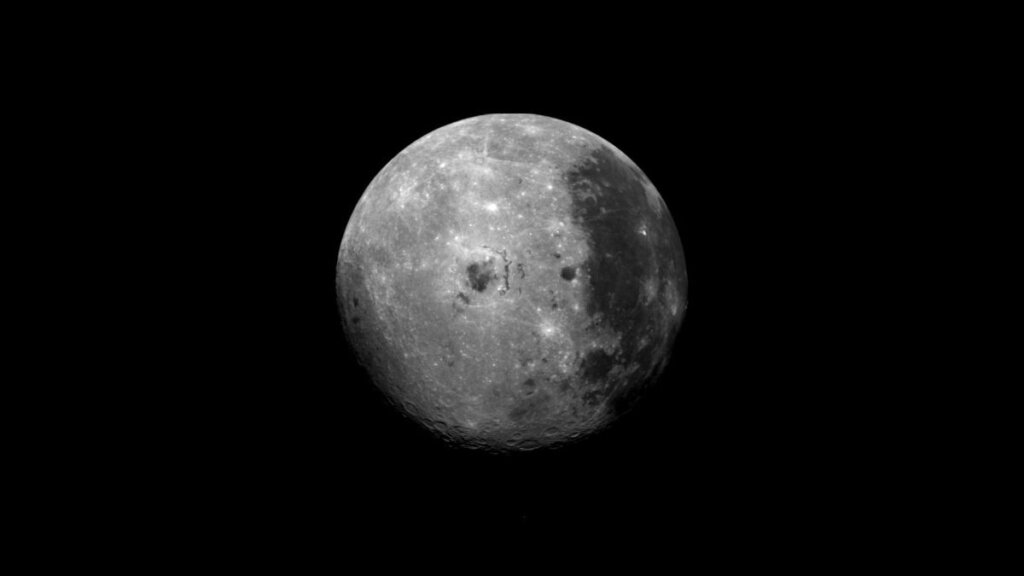
Huge granite ‘body’ on far side of the moon offers clues to ancient lunar volcanoes (Image Credit: Space.com)
A large formation of granite discovered beneath an ancient lunar volcano is further evidence that the far side of the moon once glowed with volcanic eruptions.
The granite was found under a suspected volcanic feature on the surface of the moon called Compton-Belkovich. This feature was likely formed as the result of cooling magma that fed fiery eruptions of lunar volcanoes around 3.5 billion years ago.
Finding the remains of volcanic activity in this region of the moon isn’t completely unexpected, as researchers have long suspected this area to be an ancient complex of volcanoes. What has come as a surprise to the team, however, is just how large this patch of cooled magma is, with an estimated width of around 31 miles (50 kilometers). The discovery of this large body of granite beneath the Compton-Belkovich volcanic complex could help scientists explain how the lunar crust formed in the moon’s early history.
Related: Space volcanoes: Origins, variants and eruptions
The discovery of the granite body was made by a team of scientists led by Planetary Science Institute researcher Matthew Siegler using data collected by NASA’s Lunar Reconnaissance Orbiter. The data produced by the orbiter allowed the team to measure temperatures below the surface of Compton-Belkovich. The data showed heat being generated that could only come from radioactive elements that only exist on the moon as granite — an igneous rock found in the “plumbing” of volcanoes as “batholith,” underground rock formations created when magma cools without erupting.

“Any big body of granite that we find on Earth used to feed a big bunch of volcanoes, much like a large system is feeding the Cascade volcanoes in the Pacific Northwest today,” Siegler said in a statement. “Batholiths are much bigger than the volcanoes they feed on the surface. For example, the Sierra Nevada mountains are a batholith, left from a volcanic chain in the western United States that existed long ago.”
The formation of granite on Earth is usually the result of water and plate tectonics creating large areas of melted rock called melt bodies beneath our planet’s surface. Though common on Earth, granites are much scarcer on the moon as a result of the absence of both water and plate tectonics. That means this discovery could point toward the conditions locally or globally found on the moon when it was host to volcanic activity.
‘If you don’t have water, it takes extreme situations to make granite,’ Siegler said. “So, here’s this system with no water and no plate tectonics — but you have granite. Was there water on the moon — at least in this one spot? Or was it just especially hot?”
Siegler will present the team’s research at the Goldschmidt Conference, in Lyon, France, between July 9 and 14. The team’s findings are also discussed in a paper published on July 5 in the journal Nature.





